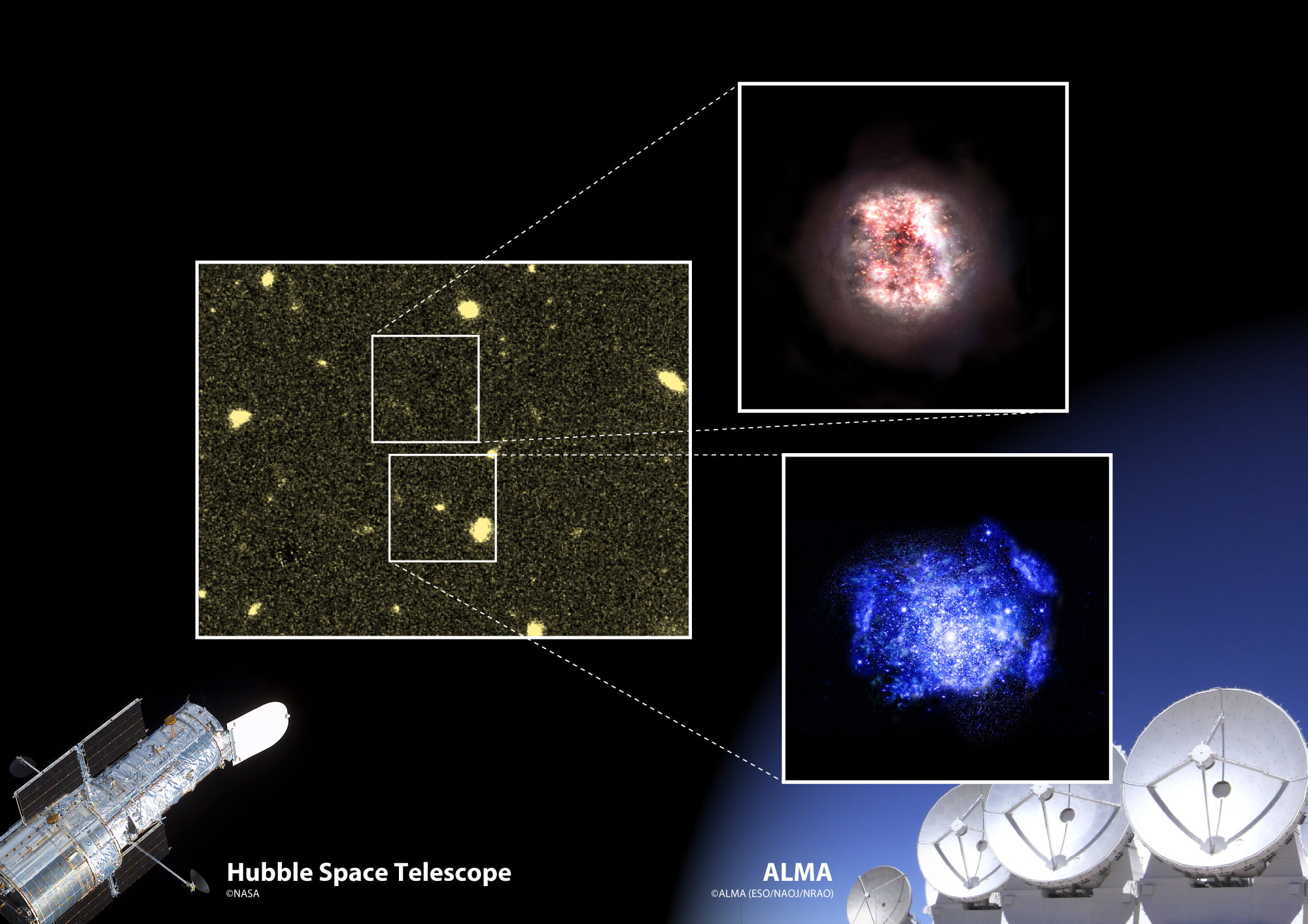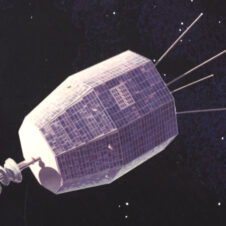Scientists serendipitously discover two heavily dust-enshrouded galaxies that formed when the Universe was only 5% of its present age.
When astronomers peer deep into the night sky, they observe what the Universe looked like a long time ago because light takes time to reach us. Studying this “early Universe” is essential for constructing accurate and consistent astrophysics models, and a key goal of scientists is to identify all the galaxies in the first billion years of cosmic history and to measure the rate at which galaxies were growing by forming new stars.
While investigating the data of young, distant galaxies observed with the Atacama Large Millimeter/submillimeter Array (ALMA), astronomers from a global research team called REBELS (Reionization-Era Bright Emission Line Survey), which includes ICRAR-UWA’s Dr Elisabete da Cunha, noticed unexpected emissions coming from seemingly empty regions in space. They confirmed the emissions actually came from two hitherto undiscovered galaxies heavily obscured by cosmic dust. This discovery suggests that numerous such galaxies might still be hidden in the early Universe, many more than researchers were expecting.

A schematic of the results of this research. In the near-infrared image taken by the Hubble Space Telescope (left), a galaxy is seen slightly below the centre. This is a typical young galaxy, as shown in the artist’s impression lower left. On the other hand, ALMA revealed a hitherto undiscovered galaxy as it is buried deep in dust (artist’s impression in upper left) in a region where the Hubble Space Telescope could not see anything. Credit: ALMA (ESO/NAOJ/NRAO), NASA/ESA Hubble Space Telescope.
“These unprecedented observations of galaxies in the very early Universe show that by looking for young galaxies in the ultraviolet to optical range we might have been missing a significant population of dust-obscured galaxies” said co-author Dr Elisabete da Cunha, a researcher based at The University of Western Australia node of the International Centre for Radio Astronomy Research (ICRAR).
“These galaxies can only be detected in the infrared/sub-millimetre domain, where interstellar dust grains shine. This can have profound implications for our census of primeval galaxies and their star formation, and also tells us that dust grains form very early on and have to be accounted for when we study even the most distant galaxies.”
The unique capability of the ALMA telescope to study distant galaxies at submillimeter wavelengths could be particularly useful for studying dusty galaxies missed in the Hubble Space Telescope (HST) surveys due to the dust absorbing UV emission. Since ALMA observes in submillimeter wavelengths, it can detect these galaxies by observing the dust emissions instead. In the ongoing REBELS large program, astronomers are using ALMA to observe the emissions of 40 target galaxies at cosmic dawn. Using this dataset, they have recently discovered that the regions around some of these galaxies contain more than meets the eye.
What is most surprising about this serendipitous finding is that the newly discovered galaxies, which formed more than 13 billion years ago, are not strange at all when compared with typical galaxies at the same epoch. “These new galaxies were missed not because they are extremely rare, but only because they are completely dust-obscured,” explains lead author Dr Yoshinobu Fudamoto, from Waseda University and the National Astronomical Observatory in Japan. However, it is uncommon to find such “dusty” galaxies in the early period of the Universe (less than 1 billion years after the Big Bang), suggesting that the current census of early galaxy formation is most likely incomplete, and would call for deeper, blind surveys. “It is possible that we have been missing up to one out of every five galaxies in the early Universe so far.”, Fudamoto adds.
Dr da Cunha says that ALMA is an amazing instrument. “We can only now detect this dust thanks to the amazing capabilities of the ALMA observatory.”
Overall, this study constitutes an important step in uncovering when the very first galaxies started to form in the early Universe, which in turn shall help us understand where we are standing today.
Publication:
‘Normal, Dust-Obscured Galaxies in the Epoch of Reionization‘, published in Nature on September 23rd, 2021.
DOI 10.1038/s41586-021-03846-z
More info:
ICRAR
The International Centre for Radio Astronomy Research (ICRAR) is a joint venture between Curtin University and The University of Western Australia with support and funding from the State Government of Western Australia.
ALMA
The Atacama Large Millimeter/submillimeter Array (ALMA), an international astronomy facility, is a partnership of ESO, the U.S. National Science Foundation (NSF) and the National Institutes of Natural Sciences (NINS) of Japan in cooperation with the Republic of Chile. ALMA is funded by ESO on behalf of its Member States, by NSF in cooperation with the National Research Council of Canada (NRC) and the Ministry of Science and Technology (MOST) and by NINS in cooperation with the Academia Sinica (AS) in Taiwan and the Korea Astronomy and Space Science Institute (KASI).
ALMA construction and operations are led by ESO on behalf of its Member States; by the National Radio Astronomy Observatory (NRAO), managed by Associated Universities, Inc. (AUI), on behalf of North America; and by the National Astronomical Observatory of Japan (NAOJ) on behalf of East Asia. The Joint ALMA Observatory (JAO) provides the unified leadership and management of the construction, commissioning and operation of ALMA.

